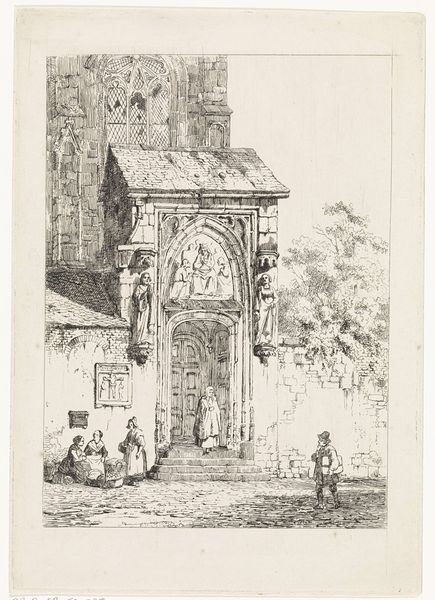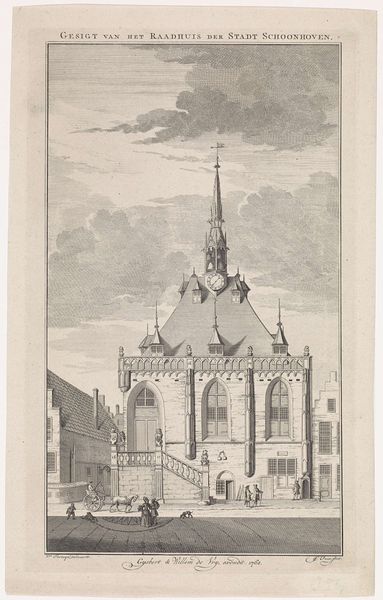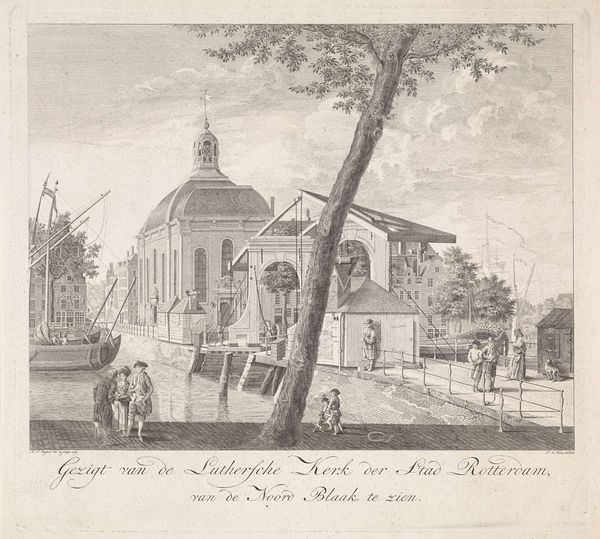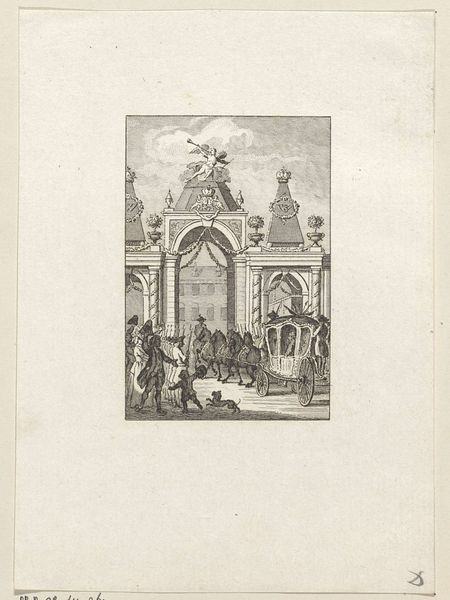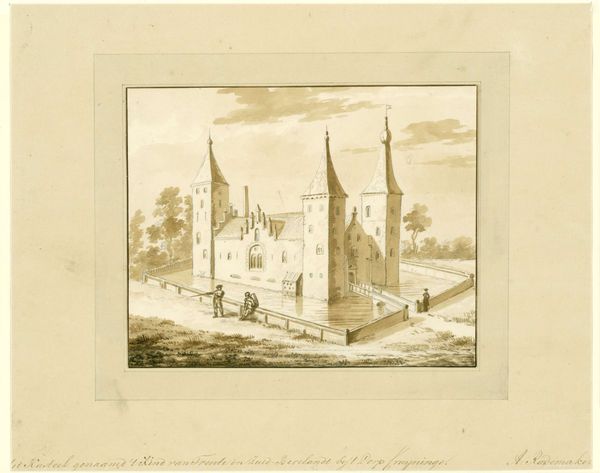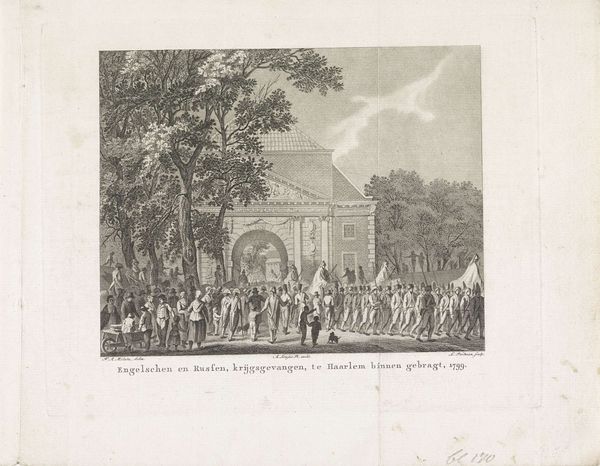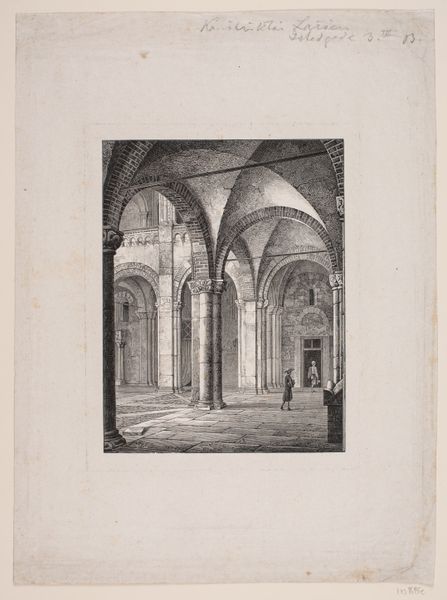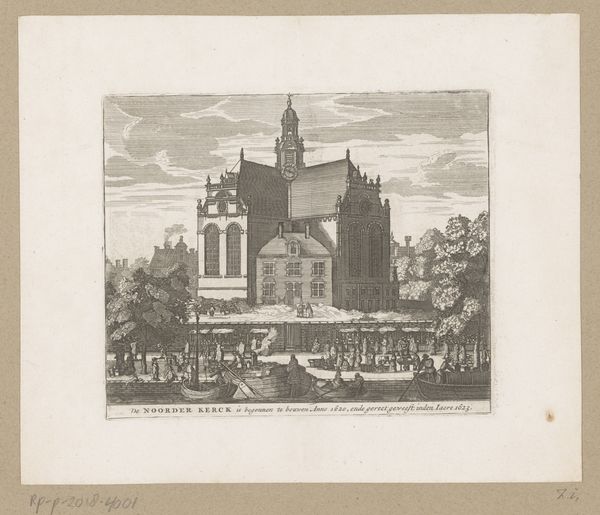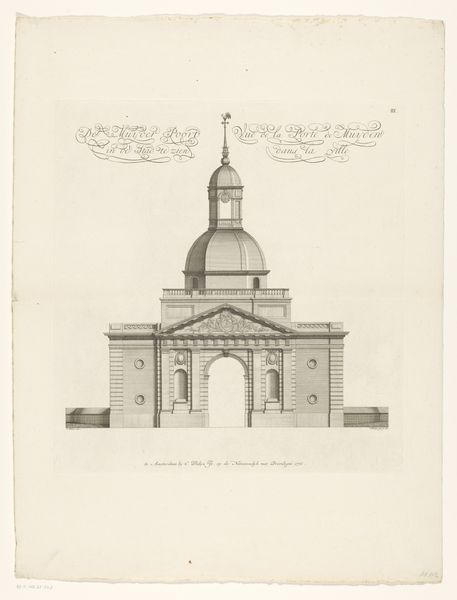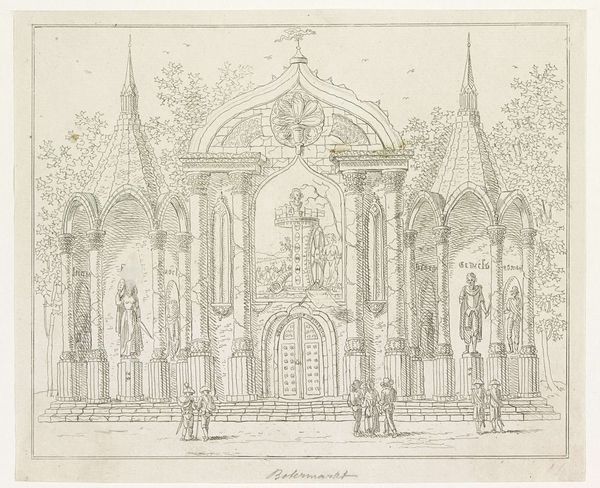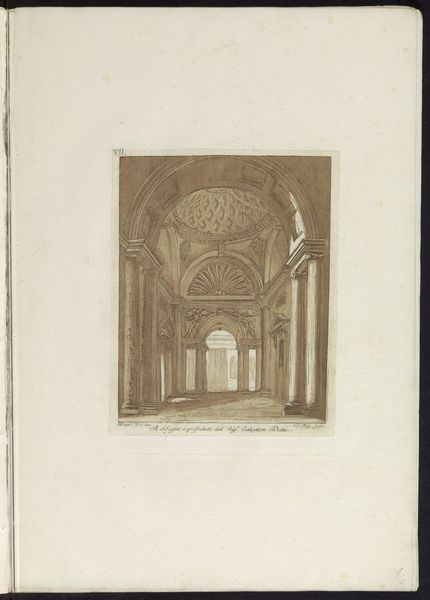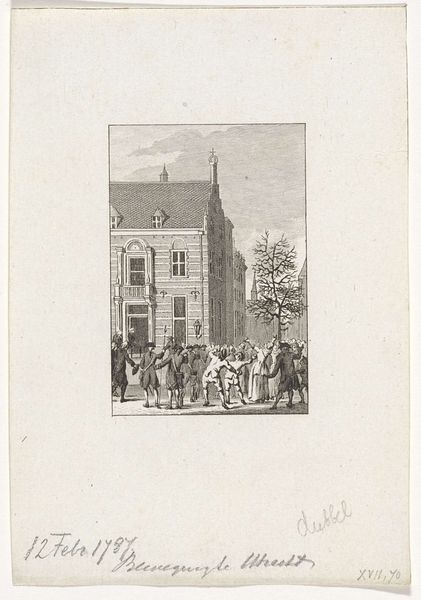
Triomfpoort ter ere van 200 jaar vrijheid in Vlissingen, 1772 1783 - 1795
0:00
0:00
Dimensions: height 160 mm, width 100 mm
Copyright: Rijks Museum: Open Domain
Curator: Immediately, it evokes a feeling of celebration, although rendered in very controlled lines. The symmetrical composition focuses attention on the archway and its procession. Editor: You're observing "Triomfpoort ter ere van 200 jaar vrijheid in Vlissingen, 1772," or "Triumphal Arch in Honor of 200 Years of Freedom in Vlissingen, 1772." This work, attributed to Reinier Vinkeles, likely dates between 1783 and 1795, and is an engraving, so it belongs to a longer lineage of triumphal prints that memorialize events publicly. Curator: Yes, triumphal arches have been a common visual expression in Europe since Roman antiquity, with the image designed to assert the power of authority. Notice the figures that flank each side of the arch, reminiscent of classical statues of mythological figures, all signifying a return to order after years of conflict. Editor: Indeed, and while arches had been made of wood, plaster and other provisional material, images like this one allowed the celebrations to be circulated for decades. Here we can read in visual terms about Vlissingen’s desire to be seen as a city defined by order, governance and self-determination. The procession through the arch further legitimizes that image to those in the city as well as abroad. Curator: You make an important point about images circulating values. To my eye, there is almost an ambiguity about the scene itself: Is this a truly joyful celebration, or one that feels heavily managed by social constraints? The use of line as the primary element gives it a somewhat detached feeling, despite the active subject matter. Editor: The use of line allows Vinkeles to achieve an admirable level of detailed accuracy. The work offers not just a portrayal of the arch, but also captures local attire and social strata. The engraving doesn't just depict the event, but disseminates the celebration’s socio-political implications. Curator: Absolutely, and considering the layered symbolism involved—freedom, order, authority—the image is not merely a cityscape but a tableau of Dutch values. Editor: Precisely. Through art, history gains the ability to perpetuate memory. This print transforms a moment into a statement, shaped by artistry and public consumption.
Comments
No comments
Be the first to comment and join the conversation on the ultimate creative platform.

